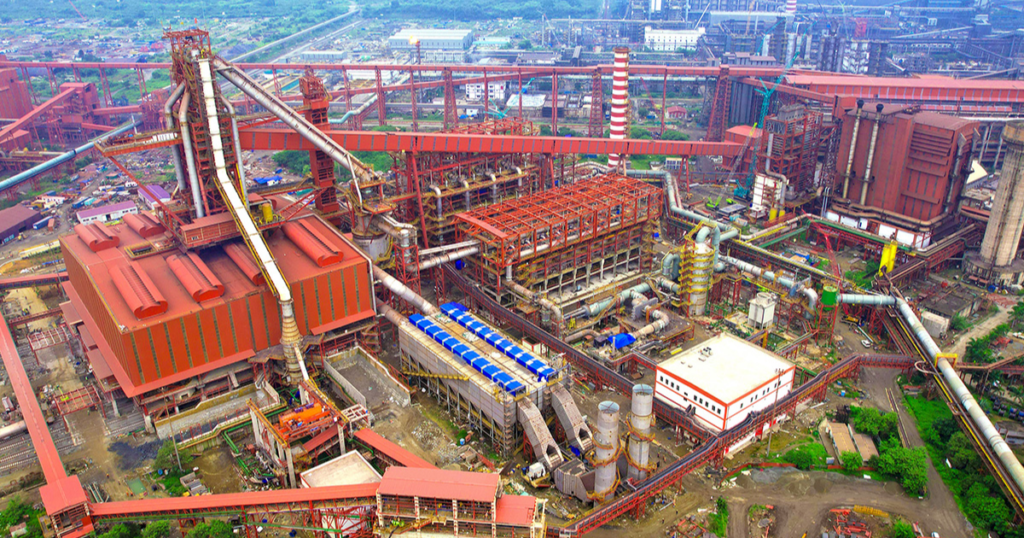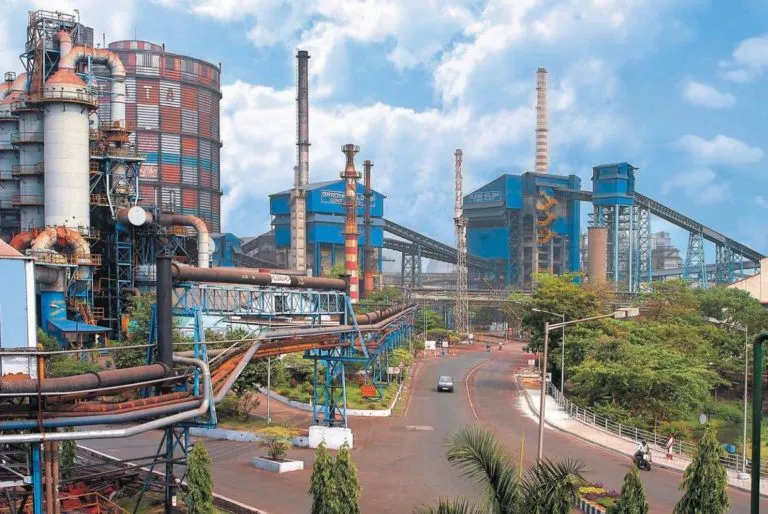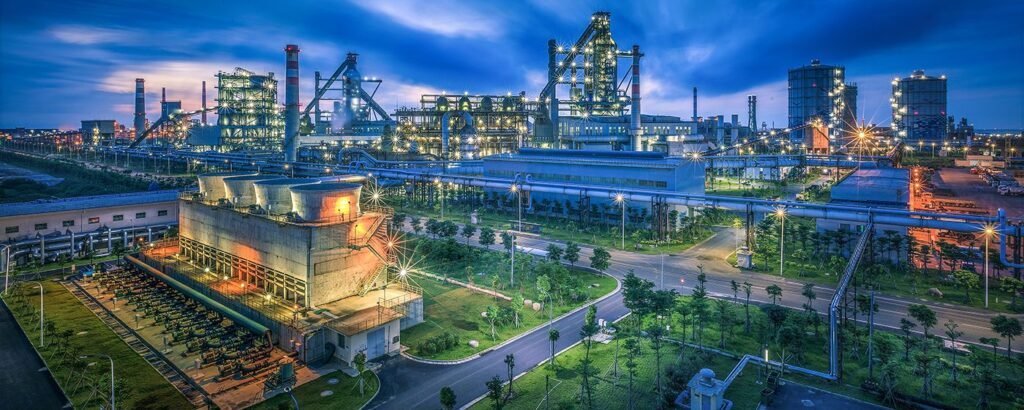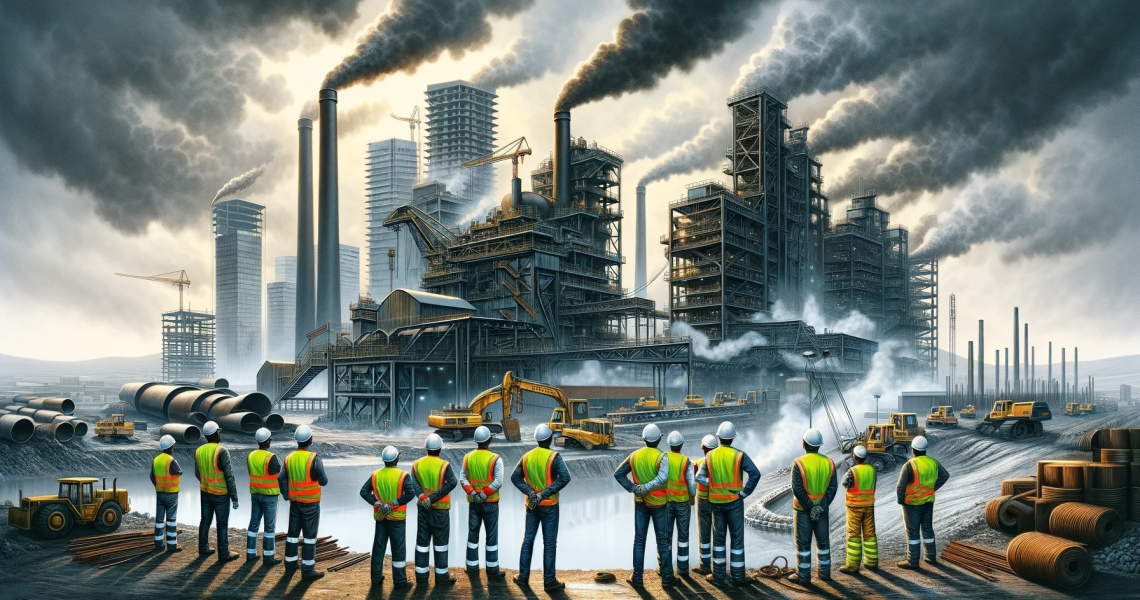🌍 Global Steel Titans: Key Players & Production Trends in the Steel Industry (2024–2025)
As global economies transition into new phases of industrialization and sustainability, the steel industry continues to reflect broader economic, geopolitical, and environmental trends. The World Steel Association’s “2025 World Steel in Figures” offers an authoritative snapshot of the world’s largest steelmakers and their production volumes across continents. From Asia to Africa, Europe to the Americas, the race to dominate the steel sector is shaped by both market demand and the pursuit of low-emission technology.
🇨🇳 Asia Leads: Baowu Group, ArcelorMittal, and Nippon Steel Dominate
Topping the charts once again, China Baowu Group retained its title as the largest global steelmaker in 2024, producing 130 million metric tons—almost identical to its 2023 output of 131 million metric tons. Headquartered in Shanghai, Baowu’s continued dominance underscores China’s deep-rooted role in global steel production.
In second place, ArcelorMittal, the Luxembourg-based giant with a strong Indian foothold through AM/NS India, produced 65 million metric tons in 2024. Despite a 5.13% year-on-year decline, its global presence in Europe, the Americas, and Africa secures its stronghold.
Nippon Steel, Japan’s leading producer, held firm in 4th place with 43 million metric tons. The Tokyo-headquartered group also benefited from joint ventures and global stakes, including Ovako, Sanyo Special Steel, and a 22% share in Brazil’s Usiminas, further strengthening its global output.

🇮🇳 India’s Rise: Tata Steel and JSW Steel Climb Steadily
India continues to solidify its status as a global steel heavyweight. Tata Steel maintained 10th position, increasing output by 5.15% to 31 million metric tons. Meanwhile, JSW Steel recorded 3.05% growth, producing 26.9 million metric tons, enough to secure its 12th place globally.
India’s performance reinforces the country’s strategic investments in infrastructure and industrial manufacturing, especially under its “Make in India” and green transition initiatives.
🇰🇷 Korean Decline: POSCO and Hyundai Steel Feel the Pressure
South Korea’s steelmakers saw mixed performance. POSCO Holdings slipped slightly to 7th place with a 1.7% drop to 37.8 million metric tons. Hyundai Steel fell by 4.57% to 18.4 million metric tons, sliding to 21st position.
Dongkuk Steel experienced one of the most significant setbacks in Asia, dropping to 102nd place due to a 16.2% decrease in output.
🇻🇳 Vietnam’s Surprise: Hoa Phat Soars in Rankings
Hoa Phat Steel emerged as Southeast Asia’s breakout performer. Its steel output surged by 30% to 8.71 million metric tons, propelling it from 62nd to 49th globally. The company’s agility and domestic demand strength position it as a rising star in the region.
🇩🇪 Europe’s Comeback: Germany Ups Production
Germany, Europe’s largest steel-producing nation, poured 37.2 million metric tons in 2024, up 5.2% from the previous year.
- ThyssenKrupp retained 42nd position, with output stable at around 10.3 million metric tons.
- Salzgitter Group climbed from 69th to 61st, thanks to a 12% increase to 6.39 million metric tons—partly driven by green steel initiatives and partnerships (e.g., with Volvo Cars).
🇺🇦 Resilience in Adversity: Ukraine’s Metinvest
Despite war challenges, Metinvest rose 18 spots to 92nd, increasing output by 8.58% to 3.54 million metric tons. This growth is a testament to Ukrainian resilience and adaptation under extreme pressure.
🇹🇷 Turkey’s Surge: Tosyali and Erdemir on the Rise
Turkey’s Tosyali Holding had a breakthrough year, producing 9.12 million metric tons—a 55% increase, pushing it to 46th globally. Erdemir Group also jumped five spots to 50th, with a 19% growth to 8.54 million metric tons.
🌍 Africa: Egypt’s Ezz Steel Holds the Continent’s Crown
Africa’s top steel producer, Ezz Steel, increased production by 3.4% to 6.38 million metric tons. This modest gain pushed it two spots higher to 62nd globally, reaffirming its dominance in the African market.
🔍 Observations: The Global Steel Landscape in 2024
- China and India remain dominant players, with diversified portfolios and strong domestic markets.
- Europe, led by Germany, is rebounding with an emphasis on green steel transformation.
- The Americas show resilience, though U.S. steelmakers face challenges from tariffs and global overcapacity.
- Turkey, Vietnam, and Ukraine exemplify dynamic growth fueled by market strategy and adaptive capacity.

🔧 Explore the Top 10 Steel Industry Trends of 2025
How Innovation is Reshaping the Future of Steel Manufacturing
The global steel industry is in the midst of an extraordinary transformation. Fueled by technological innovation, sustainability goals, and market demands for smarter, greener, and more efficient materials, 2025 marks a major shift in how steel is made, used, and perceived.
From 3D printing and hydrogen-fueled production to predictive maintenance and immersive technologies, this blog explores the Top 10 Steel Industry Trends in 2025—based on the latest research from the StartUs Insights Discovery Platform and a deep dive into 650+ startups and scaleups revolutionizing the steel sector.
📊 Top 10 Steel Manufacturing Trends Driving the Future (2025)
1. 🧪 Advanced Coating for High-Performance Steel
Steel is getting a durability makeover with advanced coatings like galvanizing, thermal sprays, epoxy, and nano-ceramics. These coatings extend product lifespan, enhance corrosion resistance, and reduce maintenance costs in critical sectors such as construction, automotive, and aerospace.
- Allium Engineering (USA): Offers corrosion-resistant rebar using stainless-steel layers and oxide coatings.
- Thintech Coatings (Vietnam): Provides nanomaterial-based coatings that improve durability, thermal stability, and surface hardness.
2. ⚙️ Smart Steel Manufacturing & Industry 4.0
Steel plants are becoming data-driven, sensor-rich, and AI-powered environments. Smart steelmaking leverages Industrial IoT, analytics, and automation to improve quality, reduce downtime, and optimize raw material use.
- Foresight Data Machines (UK): AI-based process control for EAF steelmaking to improve yield and energy efficiency.
- XYMA Analytics (India): High-temperature multi-point sensors for pipeline monitoring and predictive control.
3. ♻️ Recycled Steel & Circular Production
The shift to recycled steel via electric arc furnaces (EAFs) is central to decarbonization efforts. Steelmakers now prioritize end-of-life steel reuse and scrap-to-product cycles to reduce waste and CO₂ emissions.
- PRINZ Blades (Germany): Uses recycled EAF steel and solar power for green blade production.
- POSCORE (South Korea): Recycles complex electrical steel scrap into magnetic powder for EV motors.
4. 🖨️ 3D Printing for Custom Steel Parts
Additive manufacturing is revolutionizing the production of steel components. It reduces material waste, shortens lead times, and allows precise, on-demand part fabrication.
- Aditiv Solutions (South Africa): Delivers powder-bed fusion systems for complex steel part manufacturing.
- Headmade Materials (Germany): ColdMetalFusion for eco-friendly, sinter-based 3D metal printing.
5. 🤖 Robotic Automation in Steel Plants
Robots are now key to safer, faster, and smarter steelmaking. They handle hazardous tasks, support welding, automate casting, and improve quality control with AI-based vision.
- Wattman (China): Provides robot systems for cleaning, stacking, and repairing steel components.
- Mech-Mind Robotics (Germany): AI-driven software for robotic path planning and collision detection.
6. 🔥 Laser-Aided Forming for Precision Manufacturing
Lasers are enabling form-free, tool-less steel forming that improves geometrical accuracy, reduces springback, and creates complex bends.
- Applied Impulse (USA): Combines laser ablation with impulse manufacturing for corrosion-resistant steel joining.
- SG Metals (USA): Uses plasma and laser cutting for precision steel parts and coil processing.
7. 💨 Hydrogen-Fueled Green Steel
Hydrogen is becoming a clean substitute for fossil fuels in steelmaking. It’s used in direct reduced iron (DRI) processes and electric arc furnaces, minimizing emissions.
- Hystar (Norway): Produces compact, scalable PEM electrolyzers for hydrogen generation.
- ELECTRIC HYDROGEN (USA): Builds integrated electrolyzer plants for cost-effective green steel production.
8. 🌫️ Carbon Capture for Emission Reduction
Steel producers are implementing CCUS (Carbon Capture, Utilization & Storage) systems to trap CO₂ from flue gases and reuse or store it underground—supporting net-zero goals.
- Verde CO2 (USA): Offers carbon capture hardware and geologic analysis for sequestration.
- Capture6 (USA): Delivers DAC systems to remove atmospheric CO₂ while providing clean water.
9. 🛠️ Predictive Maintenance to Prevent Downtime
Predictive analytics uses real-time equipment data to forecast failures, schedule maintenance, and extend asset lifespan—enhancing productivity and reducing cost.
- Deep Meta (UK): Provides AI-driven defect prediction for casting and rolling operations.
- Bayanatai (Qatar): Detects surface defects in steel sheets using real-time machine learning models.
10. 🕶️ AR/VR-Enhanced Workforce Training
Augmented and virtual reality (AR/VR) transform safety training, design visualization, and factory simulation. They empower employees with digital workflows and immersive learning.
- Eterio Realities (Canada): AR tool for real-time layout visualization and fabrication tracking.
- Warp VR (Netherlands): VR-based immersive training with story-driven learning for steel plant workers.
🌍 Mapping the Future: Insights from 650+ Startups
These innovations come from a diverse and global landscape:
- Europe & USA: Lead in smart manufacturing and green steel technologies
- India & Asia-Pacific: Accelerating in IoT sensors and steel recycling
- Africa & South America: Emerging in additive and sustainable steel fabrication
Through StartUs Insights, over 40 hours of research across 650+ startups revealed the most disruptive players based on criteria such as founding year, team size, location, and technology impact.

🏗️ Why These Trends Matter
The steel industry’s transformation is not just about production—it’s about creating sustainable, smart, and scalable ecosystems. Key impacts include:
✅ Significant CO₂ reductions from hydrogen and carbon capture
✅ Better workplace safety via robotic automation and AR/VR
✅ Higher efficiency and lower costs through smart manufacturing
✅ Enhanced product performance from coatings and additive tech
🏭 LUX METAL: Pioneering Precision Metal Fabrication in Malaysia
At LUX METAL, we stay ahead by monitoring global steel trends and applying the best innovations to deliver world-class results. Whether you need laser-cutting, custom metal forming, precision welding, or eco-friendly solutions, we’re here to provide scalable, high-quality products.
Our facility in Malaysia integrates modern fabrication techniques and sustainable practices to meet the demands of tomorrow’s infrastructure, automotive, and manufacturing industries.
➡️ Visit us at www.luxmetalgroup.com to explore how our expertise aligns with the future of steel.
🏭 LUX METAL: Your Trusted Partner in Modern Steel Solutions
At LUX METAL, we stay ahead by tracking global industry trends and aligning our practices with the best in the world. Based in Malaysia, we specialize in:
- Precision Metal Fabrication
- Customized Stainless Steel & Aluminium Projects
- State-of-the-art Machining Facilities
- CNC Laser Cutting, Bending, Welding, and More
Whether you’re in construction, automotive, manufacturing, or energy, LUX METAL delivers durability, precision, and innovation—tailored to your needs.
👉 Learn more at www.luxmetalgroup.com
📚 References
To learn more about global steel trends, production forecasts, and emerging technologies, check out these insightful industry sources:
- OilPrice.com – Key Players and Production Trends in the Steel Industry
- StartUs Insights – Top 10 Steel Industry Trends (2025)
- Federal Steel Supply – Steel Industry Trends 2025

